A Hidden Synagogue in Tangier
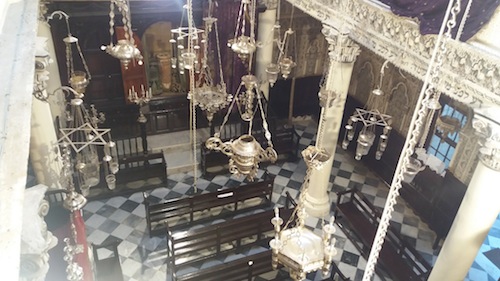
The interior of the Nahon Synagogue, with lamps donated by local families
Both of my readers have probably been wondering where I’ve been the past few weeks. I just got back from one of my semi-regular writing retreats in Tangier, Morocco. Besides getting heaps of writing done, every time I go to Tangier I always discover something new in this historic and complex city. This time I found a beautiful synagogue hidden at the end of a tiny alley.
Nahon Synagogue was built in 1878 by a wealthy banker from the nearby city of Tetouan in honor of his father Mose Nahon. Or this might have happened in 1868. The plaque on the front of the building says 1868, the caretaker and the synagogue’s literature say 1878.
The history of Jews in Tangier stretches back way before the 19th century. Archaeologists have dug up potsherds decorated with menorahs dating from Carthaginian times. Nothing else is known about Tangier’s Jewish community for this early period.
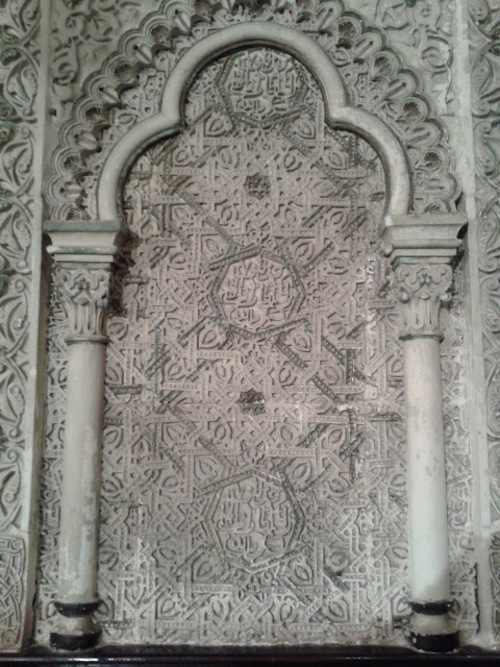
The walls are decorated in the Moorish style, as is the Anglican church in town
The Jewish community received two major influxes from Spain, the first when the Visigoths persecuted Jews in the 5th and 6th centuries, and again in 1492 when Ferdinand and Isabella told the Jews to convert or leave. Many Jews packed their bags and headed south.
Not that Morocco was always welcoming. Like many European countries, Morocco has vacillated between tolerance, grudging acceptance, and outright persecution. The worst came in the 12th century, when thousands of Jews were killed for their belief.
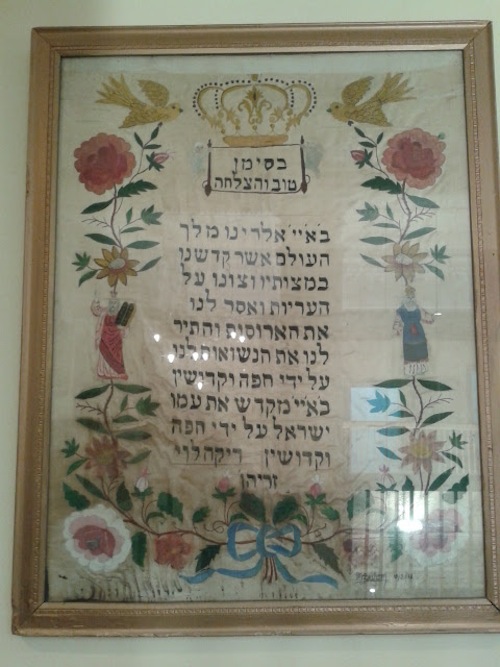
I think this is a marriage certificate. Anyone here read Hebrew?
The community recovered from that outrage and by the time the Nahon Synagogue was built there were some 8,000 Jews in Tangier and several other synagogues in the Jewish Quarter. When Tangier became an international zone in 1923, Jews from Morocco and other countries flocked there, attracted like the Gentiles by the city’s loose laws, a wide-open market, and a tolerant atmosphere. The zone was jointly administered by France, Spain, the UK, Portugal, Italy, Belgium, the Netherlands, Sweden, and the United States. Jews from all these countries moved to Tangier to seek their fortune and the community’s population quickly doubled.
Tangier was enjoying a golden age. Smugglers shipped everything from guns to cigarettes while the police looked the other way, you could set up a bank as easily as setting up a sweet shop, homosexuality was legal, and the cafes were full of pot smoke. While we usually think of Tangier in terms of great writers such as Burroughs and Bowles, most people in Tangier came there not for inspiration, but to seek their fortune. Many found it.
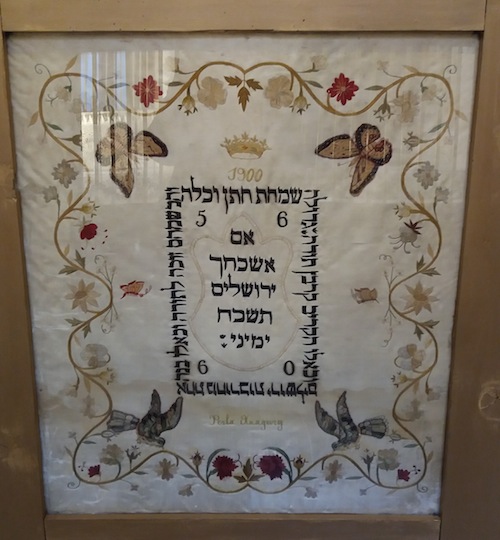
Can someone translate this?
The party ended in 1956 when Tangier was ceded to a newly independent Morocco. While the modern state gave Jews protection under the law, the city’s economy was wrecked as strict economic laws were introduced and foreign capital fled. By then Israel had been established and that tempted some in the community to leave. Others moved to Europe or the U.S. Now there are only about 150 Jews remaining in the city, but the Nahon Synagogue and several others are lovingly maintained and still used for special events.
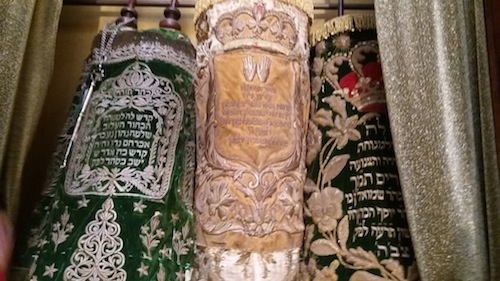
The holy texts are kept in a niche at the front
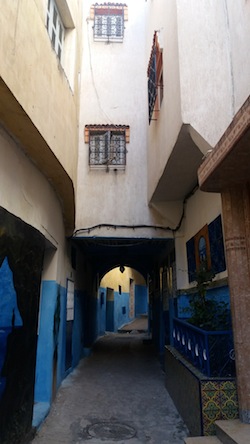
The alley leading to the synagogue
Images copyright Sean McLachlan and Almudena Alonso-Herrero.
Sean McLachlan is the author of the historical fantasy novel A Fine Likeness, set in Civil War Missouri, and several other titles, including his post-apocalyptic series Toxic World that starts with the novel Radio Hope. His historical fantasy novella The Quintessence of Absence, was published by Black Gate. Find out more about him on his blog and Amazon author’s page.
Your second photo of Hebrew text art is from Psalms 137, the central portion from verse 5: “If I forget thee O Jerusalem may my right hand forget it’s cunning.”
I believe the first photo of text is also from Scripture, but I will have to study it further when I have moment.